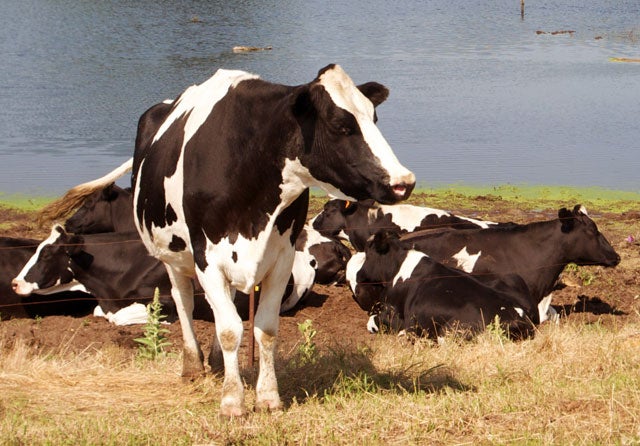Bovine growth hormone 'could cut CO2 emissions'

The use of bovine growth hormone to boost milk production – a bête noire of the organic food movement – could cut emissions of greenhouses gases substantially, according to a study that makes a strong environmental case for the controversial cattle injections.
Bovine growth hormone has been used extensively in the US for the past 14 years but is subject to a moratorium in the EU on animal welfare grounds. But now a team of American scientists has argued that its widespread adoption could help to feed a growing human population as well as helping to combat global warming.
The findings are likely to be used by the biotechnology industry, and in particular Monsanto, the US manufacturers of bovine growth hormone, to argue for the lifting of the EU moratorium on environmental grounds.
A dairy cow given bovine growth hormone produces between 10 and 16 per cent higher milk yields over a given lactation cycle, the study said. This would reduce "inputs" in the form of feedstuffs, fertilisers and fuels as well as waste "outputs" such as methane and carbon dioxide.
"Supplementing cows with [growth hormone] on an industry-wide scale would improve sustainability," said Judith Capper, of Cornell University in New York, the lead author of the study published in the journal Proceedings of the National Academy of Sciences.
Robin Maynard, of the Soil Association, said: "Routinely shooting up cows with a genetically modified hormone to squeeze more milk from them offers no sustainable solution to intensive farming's carbon footprint, nor for animal welfare."
Subscribe to Independent Premium to bookmark this article
Want to bookmark your favourite articles and stories to read or reference later? Start your Independent Premium subscription today.

Join our commenting forum
Join thought-provoking conversations, follow other Independent readers and see their replies